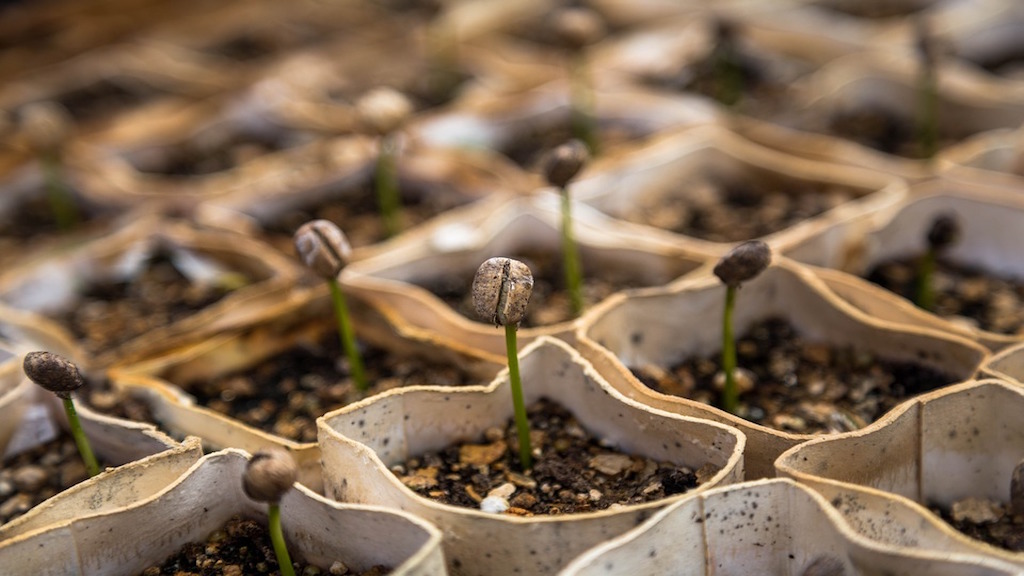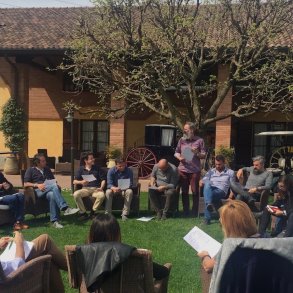What are the elements of the art of holding space?
By Barry Lipscomb originally published in Business Focalizing
Otto Scharmer, senior lecturer at MIT and founding chair of the Presencing Institute, has said that “holding space is the single most important leadership capacity going forward. Hearing this, I realized it was in fact the essential leadership trait of the 21st century. Let’s explore what it means to hold space and why it is so important for leaders today.
The world is now moving too fast to maintain detailed plans and has gotten far too complex with the consequences of our individual actions too great to continue acting in the isolation of our own organizations. Instead, leaders need the ability to see and act from the whole and the capacity to integrate all that is evolving around them while responding quickly to shift strategy and execution. It is a leadership capacity to sit comfortably in ambiguity and welcome the unknown while grounded in a bigger vision; mindful of how each evolving moment fits into that vision. In this way the leader sets a destination, chooses a route and then course corrects in each moment. Holding space allows leaders to engage the unfolding future to guide the organization rather than impose the past or even a limited vision for the future on the present. This is done in collaboration and without excess planning.
Space in this context is physical, mental, emotional and even energetic. It is expansive; linked to the moment of the experience itself, giving space for a much more interesting creation based on what is happening in the moment. The leader does this by thinking, engaging and acting differently.
- Thinking holistically while cultivating curiosity
- Engaging (rather than resisting) whatever comes up in the moment; relating authentically and consciously
- And then acting from this deeper awareness by sensing what is present in each moment and responding from an inner knowing beyond what the data, analysis or plan might otherwise suggest
In this way, the leader creates a container for an intentional experience, aligning an organizational intention and creating conditions for the future to emerge by setting aside specific expectations and curiously observing while listening deeply for what reveals itself. It is a journey from the attempted certainty of predict-and-control into the unknown of sense-and-respond. While this may appear passive to the observer, it is actually a very active and deliberate leadership practice.
John Renesch, in The Great Growing Up, describes it as having “dominion of our reality without trying to dominate it, without clever maneuvering or seduction … elegant mastery without resorting to manipulative control or imposition.”
Focalizing Dynamic Links is one of many methods a leader can utilize to hold space. It is a way of connecting with and relating to people in order to access both inner and outer resources. Two particular elements of Focalizing are especially relevant to holding space – suspension and sensing. Suspension – setting aside the judging, critical voices of doubt, fear and cynicism – opens and allows us to fully sense the wisdom of our inner experience, often through felt sensations in the body and our visual imagination. We do this through a relaxed and meditative state where we are grounded, centered, clear and focused.
Such a meditative state has three characteristics essential to the practice of holding space:
- Timelessness – fully present in the moment and allowing something greater than ourselves to move through us, creating the future
- Formlessness – beyond the confines and constraints of our physical body to experience “ourselves” in everything around us
- Non-attachment – completely content in the perfection of the current moment with total acceptance and even appreciation that the next moment may be entirely different and we will be absolutely present in the perfection and completeness of that moment, whatever it may be
Specifically, the leader holding space by focalizing a Dynamic Link demonstrates and utilizes these traits:
- Allows his or her own self to be open to and participate in the creative energy of the group, creating the context and holding space for the group intentions to emerge
- Holds no point of view nor expectation of a specific outcome other than that of the aligned intentions
- Connects with the group organically to express the innate intelligence and wisdom of the collective
- Helps participants to shift perceptions, offers additional perspectives and opens group to new possibilities
- Respectfully engages opposite energies expressed within the group for their resolution and integration and the emergence of a greater idea or vision
- Brings resource energy in the form of caring and a real sense of community
This last trait suggests that space is really just love – love for one’s self, the organization, each individual and what the group seeks to create or do. In fact, when one is in the present state necessary to hold space it is impossible to feel any other emotion than love – even though that love may present and express itself in any number of ways.
Holding space as a leadership capacity has several tangible benefits that address the complex and interconnected world in which our organizations now operate:
- Having resilience and feeling more presence in the moment
- Ability to connect dots by removing blind spots and gaining insight to previously unseen possibilities, shifting one’s point of view
- Feeling inclusivity, unification and compassion with an ability to view situations from the perspective of the whole
Leaders who choose to engage a practice of holding space step bravely into the world of the unknown where the comforts (and constraints) of current management practice are replaced with a full-bodied experience of leading from their hearts.
Permission to republish granted by the author.
Featured Image/Graphic link added by Enlivening Edge Magazine.





Holding space as described here involves the curious observer which allows us to engage otherwise opposite energies objectively; activating an alchemy from which another possibility often emerges.